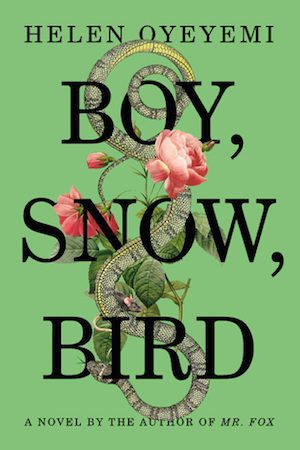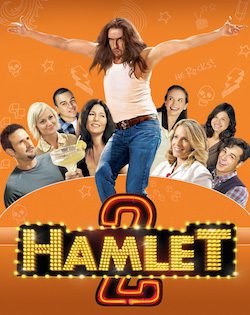
I suspect that everyone is always rewriting something or other, whether they are self-conscious about it or operating intuitively. It’s probably endemic to the literary impulse to wish to transform the works that gave us pleasure into something that brings someone else a similar sense of frisson. From Ulysses to Helen Oyeyemi’s latest book, Boy, Snow, Bird—a transplantation of the Snow White fairy tale to postwar New England—literature has always featured a share of deliberative rewriting projects.
In popular fiction, rewriting has become de rigueur: Patricia Park’s Re Jane features a contemporary Jane Eyre living in Flushing, Queens, while Jonathan Franzen’s forthcoming novel Purity, we’re told, will riff intriguingly on Dickens’s Great Expectations. Faced with this flood-tide of bestselling rewrites—Stephen King’s Finders Keepers, a sort of redo of Misery, and E. L. James’s Grey, her 50 Shades Take Two, the list goes on—it is tempting to rewrite the famous opening line of James Wood’s essay “Hysterical Realism”: “A genre is hardening.”
 But maybe originality is not where it’s at. Perhaps the question isn’t whether authors should be rewriting but what they are rewriting, why, and how. If it is obvious by now that rewriting the classics has become a risk-averse niche-marketing strategy for an industry that is stale, flat, and unprofitable, that shouldn’t spoil the fun of our larger culture of remixing. TV and movies provide a useful analogy—just because Gotham feels like a listless prequel to the Batman saga doesn’t in any way nullify the sheer exuberance of filmmaking on display in the rebooted Mad Max Fury Road.
But maybe originality is not where it’s at. Perhaps the question isn’t whether authors should be rewriting but what they are rewriting, why, and how. If it is obvious by now that rewriting the classics has become a risk-averse niche-marketing strategy for an industry that is stale, flat, and unprofitable, that shouldn’t spoil the fun of our larger culture of remixing. TV and movies provide a useful analogy—just because Gotham feels like a listless prequel to the Batman saga doesn’t in any way nullify the sheer exuberance of filmmaking on display in the rebooted Mad Max Fury Road.
I take another cue from the documentary filmmaker Adam Curtis’s comments on pop music. He is right to be perturbed that we’re living in what he describes as a “static culture” or “zombie culture” in which art not only “feeds off the past” but also merely “replicates” the effects of other works of art, and in which artists begin to see themselves like “archeologists” or tomb robbers. The larger problem, according to Curtis, is a cultural world of “stuck on beards” where “so many things just go back and dig up the bloody grave.” Curtis calls for more musicians to emulate Rihanna and fewer to copy the copies produced by Mumford and Sons. He’s hoping to encourage artists to create the new from the old and discouraging them from simply reproducing the effects of previous works or inhabiting a dead style.
Music and movies make the clearest case that remixing and rebooting is not the same thing as being derivative. Anyone who thinks contemporary literature is different hasn’t read Michael Cunningham’s The Hours, Elizabeth Graver’s Awake, Sarah Shun-lien Bynum’s Madeleine Is Sleeping, or Oyeyemi’s Mr. Fox. In a larger sense, the critic Linda Hutcheon has argued in her book A Theory of Adaptation, the storytelling impulse is fundamentally connected to the practice of adaptation from other sources. If our era has made that process less hidden and more direct, we’re not necessarily reduced to the status of aesthetic groupies or an age of artists who only qualify for a plaque on our paintings labeled “School Of” or “Followers Of”.
There are more innovative and less interesting ways of approaching these matters. Probably the most difficult strategy to pull off is the straight-up “update,” a retelling in which a version of a character from classic literature pops up in a contemporary novel. In writing this type of fiction, it is difficult to escape certain modes of message-making. Either the present is remarkably different than the past, or the more things change the more they stay the same. Either the character is a fish out of water or fits remarkably well into our place and time. It takes vast imaginative powers—like those displayed in Graver’s version of Kate Chopin’s The Awakening—not to settle for box-ticking correspondences or a programmatic compare-and-contrast strategy. Cunningham’s Specimen Days—the title and some of the material is drawn from Walt Whitman’s lesser-known 1882 prose masterpiece—takes a more extreme tack through these waters than The Hours by adding a risky futuristic storyline. But both novels deconstruct the process itself of “updating” the classics and what that delicate operation might mean.
At its most risk-averse, however, the formula for retelling the classics contains a toxic mixture of commercial safety and ready-made prestige. A case in point: The Hogarth Press has announced a new series of Shakespeare retellings, recruiting stars like Anne Tyler, Jeanette Winterson, and Margaret Atwood to reboot the bard. It’s a high concept that reduces literature to something like a celebrity panel. “For generations,” reads the Hogarth PR copy, “Shakespeare’s works have been performed, read and loved throughout the world.” I doubt that Polonius could have said it better himself, although he did advise against borrowing. For each individual writer, the Shakespeare rewriting project doubtless forms an intriguing commission—Gillian Flynn’s Hamlet Redux might well turn out to be a grippingly creepy affair. But it is difficult to imagine it competing with Rosencrantz and Guildenstern are Dead, or even with the Steve Coogan vehicle Hamlet 2, in which Jesus uses a time machine to reverse the tragic outcome of Shakespeare’s play. The Hogarth Press Shakespeare series represents the fatal trap of the middlebrow approach to Literature with a capital “L.” Buy the boxed set on the school trip at the museum gift shop, or at the Masterpiece Theater web store.
recruiting stars like Anne Tyler, Jeanette Winterson, and Margaret Atwood to reboot the bard. It’s a high concept that reduces literature to something like a celebrity panel. “For generations,” reads the Hogarth PR copy, “Shakespeare’s works have been performed, read and loved throughout the world.” I doubt that Polonius could have said it better himself, although he did advise against borrowing. For each individual writer, the Shakespeare rewriting project doubtless forms an intriguing commission—Gillian Flynn’s Hamlet Redux might well turn out to be a grippingly creepy affair. But it is difficult to imagine it competing with Rosencrantz and Guildenstern are Dead, or even with the Steve Coogan vehicle Hamlet 2, in which Jesus uses a time machine to reverse the tragic outcome of Shakespeare’s play. The Hogarth Press Shakespeare series represents the fatal trap of the middlebrow approach to Literature with a capital “L.” Buy the boxed set on the school trip at the museum gift shop, or at the Masterpiece Theater web store.
“Our age is retrospective,” Ralph Waldo Emerson wrote thunderingly in his 1836 essay “Nature”:
It builds the sepulchres of the fathers. It writes biographies, histories, and criticism. The foregoing generations beheld God and nature face to face; we, through their eyes. Why should not we also enjoy an original relation to the universe? Why should not we have a poetry and philosophy of insight and not of tradition, and a religion by revelation to us, and not the history of theirs? […]There are new lands, new men, new thoughts.
Are there? I don’t think “originality”—whatever that might mean—is the answer to the predicament of our current regime of retellings. But if everything really is a form of adaptation, then how do artists avoid becoming part of a “static culture”? If remixing culture has begun to remove us from the Romantic conception of the artist as a lone genius pouring forth originality, surely that is no bad thing. Many contemporary artists operate in practice much more like Renaissance writers such as Shakespeare himself (a notorious borrower and impersonator of styles, as Hutcheon emphasizes in her study of adaptations), and much less like the sui generis figure portrayed in the movie Shakespeare in Love.
Surely the rewriting process works best when it’s oblique, like glancing slightly away from a star in order to see it more clearly. Mixing and remixing seem like more fruitful avenues than simply ripping, retelling, and rebooting, It’s all been done, but not everything has been done to death. As Hutcheon puts it, the process of what she calls “transmutation” or “transcoding” a previous text involves “a derivation that is not derivative.” H. P. Lovecraft might have written interesting stories if he had never read Edgar Allan Poe, but surely he would not have written At the Mountains of Madness if he had never encountered Poe’s poem “The City in the Sea.” A related alchemy went on between King Lear and Jane Smiley’s A Thousand Acres, or Faulkner’s As I Lay Dying and Graham Swift’s Last Orders. (When Swift’s deliberative transplantation project was criticized after he won the Booker Prize, it only reflected badly on his critics, for not having read Faulkner in the first place.) And what about Thomas Pynchon’s Inherent Vice, with its rich compost of sources from Robert Altman’s take on Raymond Chandler in The Long Goodbye to Howard Hawks’s filmed version of The Big Sleep, never mind the paranoiac vision of Los Angeles in Chinatown or the ambient vibes of The Big Lebowski? Inherent Vice is not a rewrite in the strict sense, but it gets to the heart of the matter concerning an overall lack of anxiety about being influenced. Throw everything that’s getting old into the soup.
Straight-up retellings, then, are just the tip of the iceberg of remixing culture and its infinite potential for variation and adaptation. “Ekphrasis” is the critical term for drawing out the essence of one art form and representing it in another. The term was originally used for textual descriptions of visual art, but it also has been considered in a wider sense as art based on other art, in poems related to sculpture (Keats’s “Ode on a Grecian Urn” being the most obvious example), or the attempt to capture a piece of music on the page, or a musical composition that represents a painting. The connections between the two works create a new frisson—a thread lights up in the brain— but the new artwork should be able to stand on its own if the reader happens not to know what the old urn looks like. The hip-hop album Liquid Swords can be enjoyed without seeing the Kung-Fu movies on which it’s constantly riffing, and the same goes for Quentin Tarantino’s Kill Bill films, which features one of the same clips reused in Liquid Swords. Richard Powers’s first novel, Three Farmers on Their Way to a Dance, imagines the lives of the men captured in August Sander’s 1914 photograph “Young Farmers,” while Powers’s third novel, The Gold Bug Variations, binds together the science of DNA, the music of Bach, and the eponymous short story by Poe.
but the new artwork should be able to stand on its own if the reader happens not to know what the old urn looks like. The hip-hop album Liquid Swords can be enjoyed without seeing the Kung-Fu movies on which it’s constantly riffing, and the same goes for Quentin Tarantino’s Kill Bill films, which features one of the same clips reused in Liquid Swords. Richard Powers’s first novel, Three Farmers on Their Way to a Dance, imagines the lives of the men captured in August Sander’s 1914 photograph “Young Farmers,” while Powers’s third novel, The Gold Bug Variations, binds together the science of DNA, the music of Bach, and the eponymous short story by Poe.
Calling Powers and Oyeyemi two brilliant literary DJs might sound a little bit annoying and embarrassingly uncool, and, besides, I’m confident someone else has said all this before. But the concept does have the virtue of calling attention to the fact that fiction and criticism are embedded in a much wider and extremely complex culture of ripping and sampling, of copying and simulacra, of pirating and hacking, of digital replication via “RW” technological platforms and handmade graffiti keyboarded on top of Twitter “RTs.” Curtis’s analogy between pop music and the culture at large remains vital precisely because music is the busiest intersection between art and commerce, and the clearest example of how the reign of remixing can either feed into or radically resist the gravitational pull towards “static culture,” with its heat-death of entropic drifting.
One recent literary-cinematic experiment that feels both resistant and innovative is the collaboration of Tom McCarthy and Johan Grimonprez on the 2009 film Double Take, which mixes the films and biography of Alfred Hitchcock with a retelling of the Jorge Luis Borges short story “Borges and I.” During the filming of The Birds, Hitchcock meets his double, and a plethora of meta-hijinx ensue. The film is deeply invested in questions of copying, rewriting, doubling, and the seeming impossibility of originality. Despite its multiple layers and self-conscious reference points, the film is also a completely legible and deeply compelling take. Is Double Take a work of criticism, an essay-film, a documentary, a experimental collage, a movie mix-tape, a narrative mash-up, or a filmed adaptation of a short story based on a sketch drawn from the myth of the doppelgänger? I don’t know, but I admire it very much. It’s more novel than many novels, especially the kind of contemporary novels that present themselves as little more than ready-made source-material for a certain type of movie.




